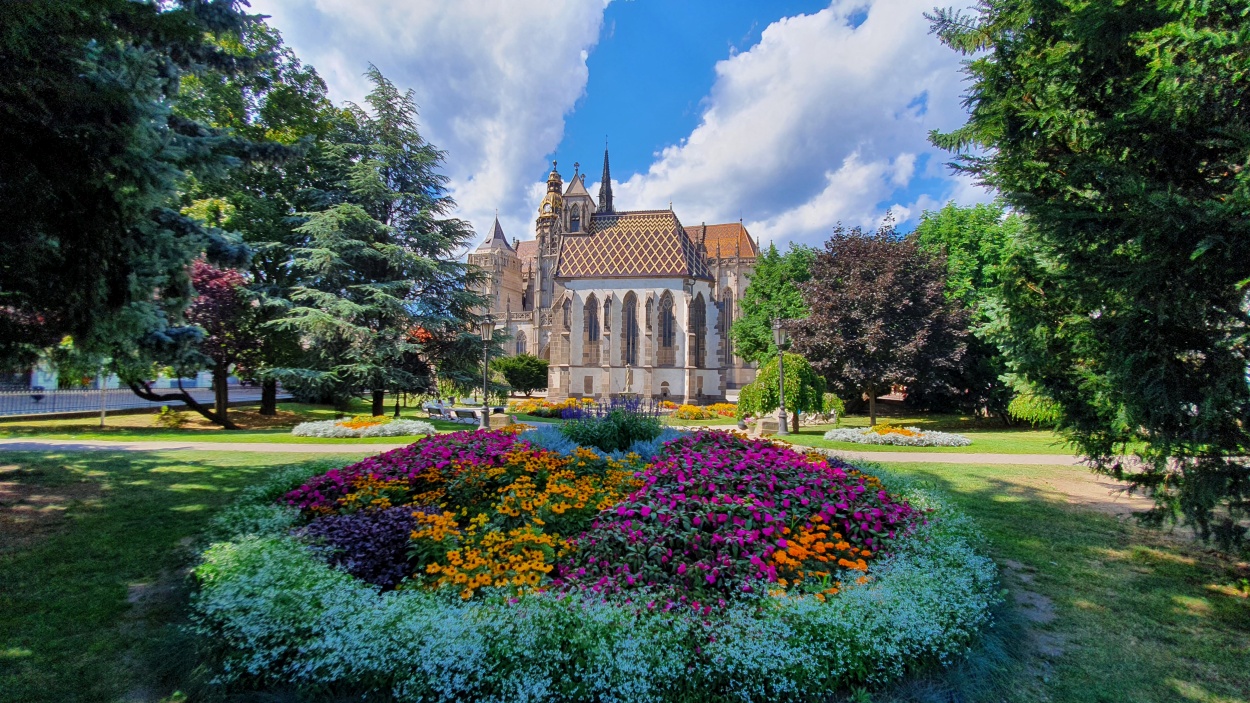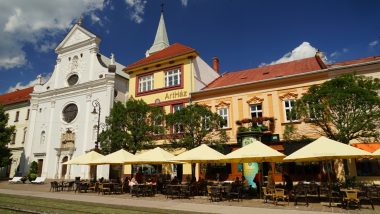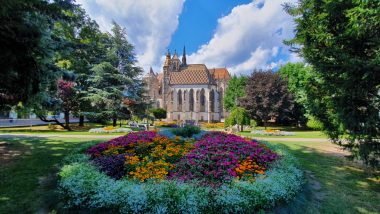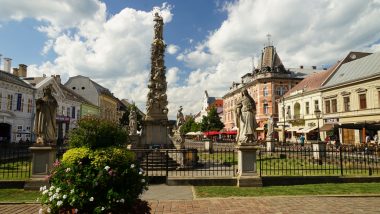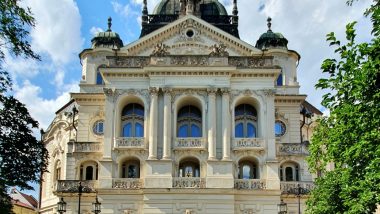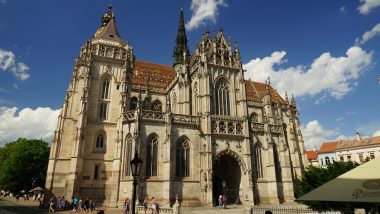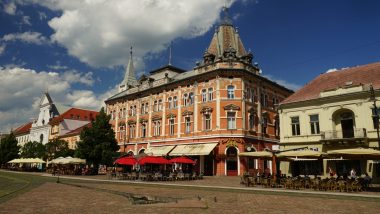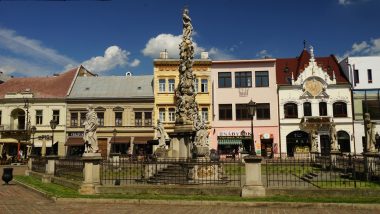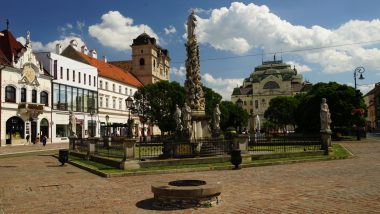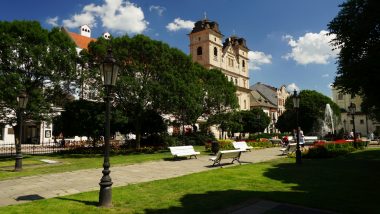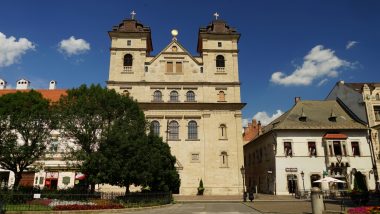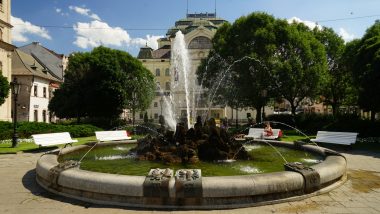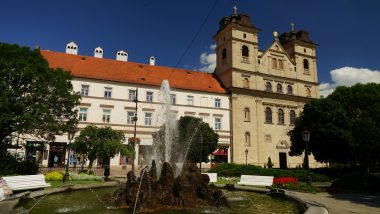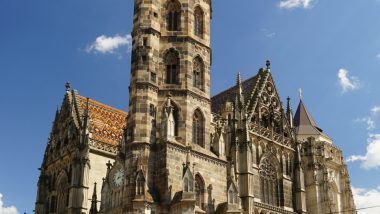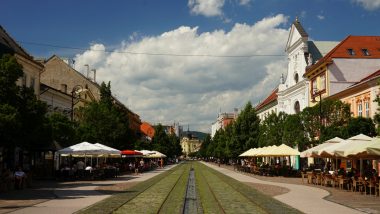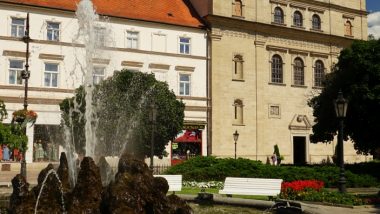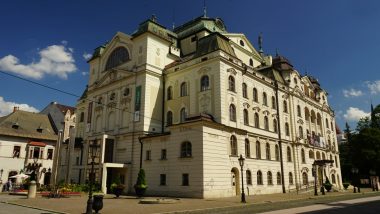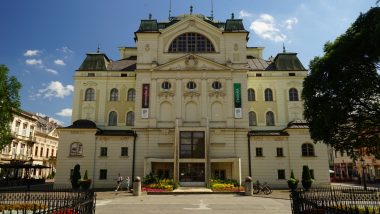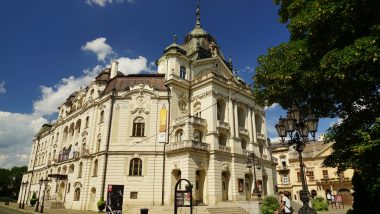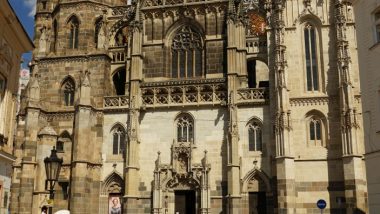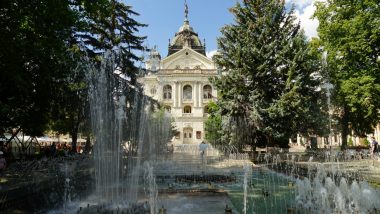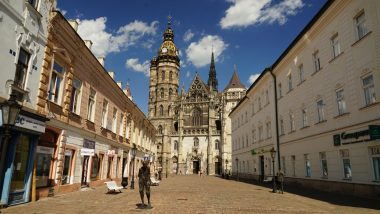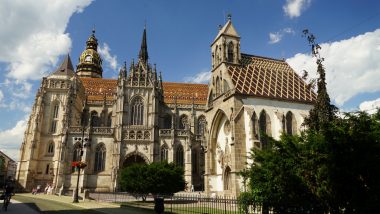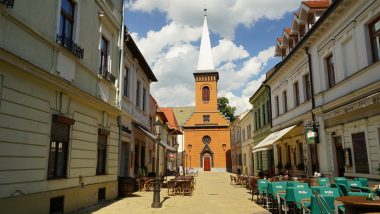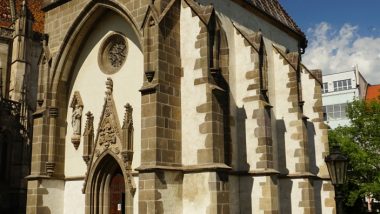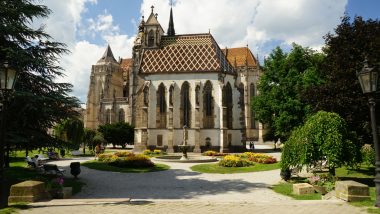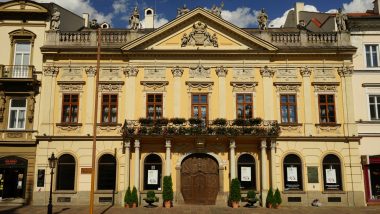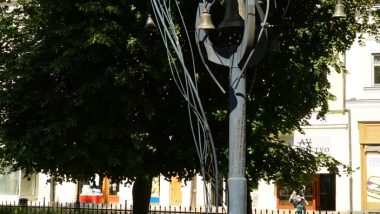We spent two days in Košice – the largest city in eastern Slovakia. It is situated on the river Hornád at the eastern reaches of the Slovak Ore Mountains, near the border with Hungary. Košice originated in the 9th century and was chartered in 1241. In the late Middle Ages, it was one of the 24 trading settlements of the Polish-Slovak frontier, in which immigrant German merchants were prominent. In 1660 Benedict Kischdy, the Hungarian bishop of Eger founded a university at Košice that was later suppressed by the Austrians. There are remnants of the city’s stout 17th-century fortifications, built as a defense against the Turks; particularly well preserved are the Hangman’s Bastion, now a museum, and the Mikluš Prison. The long medieval street known as Hlavná Ulica is still the center of the city. Along it stands the great Gothic Cathedral of St. Elizabeth, St. Michael’s Chapel, Levoča House (the former warehouse of the trading-settlement merchants), and several other churches and palaces. Košice developed rapidly after it became a part of Czechoslovakia in 1920. In 1938 the city was occupied by the Hungarians; after liberation in 1945, it became the first seat of the postwar Czechoslovakian government and of the Slovak National Council. On the first day, we made some lazy sightseeing with lunch (Chicken soup, Fried pork with French fries and Dessert – 5,90 EUR). And in the evening we ended up in club Jazz Café (Gin and tonic 5,80 EUR, Bottled beer 0,33 l / 3,20 EUR, entrance to disco – 3 EUR). The second day we spent with laundry and visit of our friend in nearby Rudník village.
Parking location – Košice: 48.727646N 21.241552E


